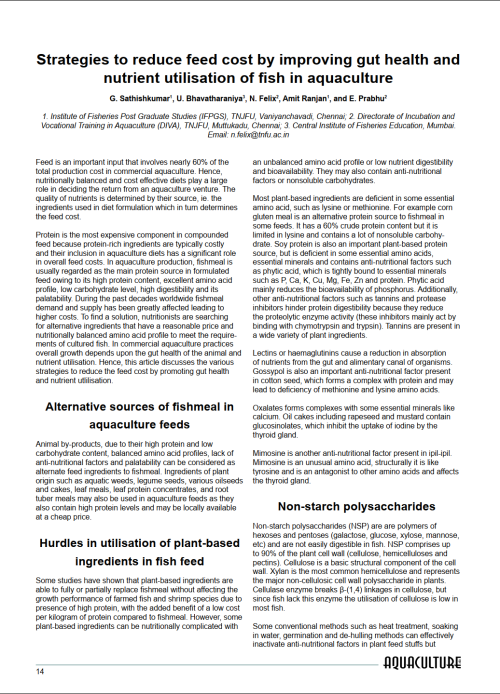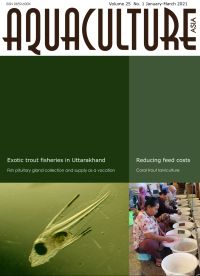Strategies to reduce feed cost by improving gut health and nutrient utilisation of fish in aquaculture
19 January 2021 | G. Sathishkumar, U. Bhavatharaniya, N. Felix, Amit Ranjan, and E. Prabhu | 1575 Downloads | .pdf | 159.03 KB | India, Nutrition and feeding
Feed is an important input that involves nearly 60% of the total production cost in commercial aquaculture. Hence, nutritionally balanced and cost-effective diets play a large role in deciding the return from an aquaculture venture. Protein is the most expensive component in compounded feed.
Nutritionists are searching for alternative ingredients and approaches to offset the use of fishmeal in aquaculture feeds. This article discusses strategies to reduce feed cost by promoting gut health and nutrient utlilisation, including:
- Use of probiotics to modulate gut microflora using selected bacteria.
- Use of prebiotics to promote the development of selected bacterial strains.
- Supplementation with exogenous enzymes to improve digestibility.
- Supplementation with essential nutrients to overcome deficiencies of ingredients.
- Supplementation with chemo-attractants to improve palatability.
- Use of other feed additives such as acidifiers to improve digestibility and mycotoxin binders.
Creative Commons Attribution.

